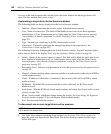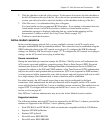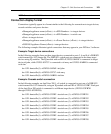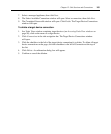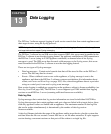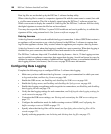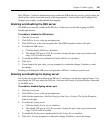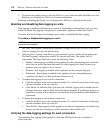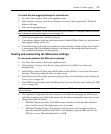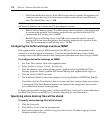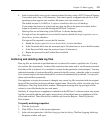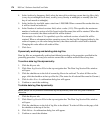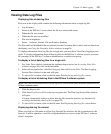
168 DSView 3 Software Installer/User Guide
Data log files are not backed up by the DSView 3 software backup utility.
When a data log file is created, a companion signature file with the same name is created, but with
a .sig file name extension. This file is digitally signed using the DSView 3 software private key.
When a user wants to display the content of a data log file, the DSView 3 software will first verify
the digital signature to ensure the file has not been altered.
You may also export the DSView 3 system X.509 certificate and use its public key to validate the
signature of files, using external tools. See System certificate on page 43.
Data log licenses
A data log license is used for each enabled data log port connection. A direct SSH/Telnet session to
an appliance will not require or use a data log license for the DSView 3 software to capture data
logs for that appliance session. Only sessions related to appliance ports require a data log license.
A data log license is used when data logging is enabled on a port connection. When data logging is
disabled on a port connection, that license is freed and returned to the available pool.
The DSView 3 software ships with 32 available data log licenses - that is, 32 data logging sessions
may be enabled on appliance connections that support data logging. An add-on license key may be
obtained to support a certain number of additional data logging sessions or an unlimited number of
data logging sessions (site license). See Licenses on page 50 for more information.
Configuring Data Logging
Complete the following steps to configure DSView 3 software data logging.
• Make sure you have sufficient data log licenses - one per port connection for which you want
to log session data; see Data log licenses on page 168.
• Enable the SSH server; see Enabling and disabling the SSH server on page 169.
• Enable the Syslog server; see Enabling and disabling the Syslog server on page 169.
• Enable data logging on appliance and/or target device connections; see Enabling and disabling
data logging on units on page 170.
• Verify the data logging settings for each connection; see Verifying the data logging settings for
each connection on page 170.
• Customize the SSH server settings; see Viewing and customizing the SSH server settings on
page 171.
• Configure the notification mode for buffer warning events as SNMP; see Configuring the
buffer warnings events as SNMP on page 172.
• Specify where the data log files will be stored; see Specifying where data log files will be
stored on page 172.
• Specify archiving properties; see Archiving and deleting data log files on page 173.



